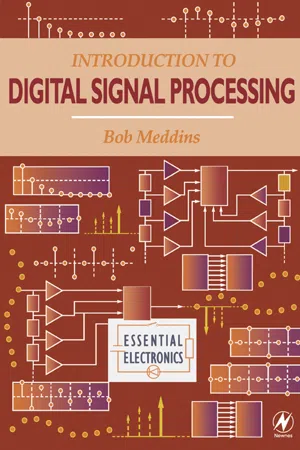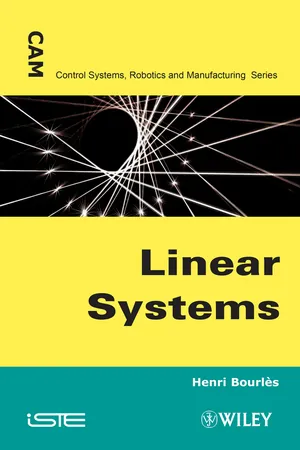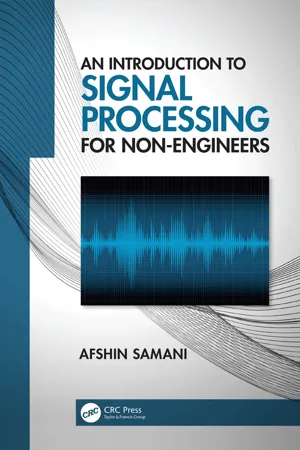Discretization
Discretization is the process of converting continuous data or functions into discrete form. In the context of technology and engineering, it is commonly used in numerical analysis and computer simulations to represent continuous systems with a finite set of values or intervals. This method allows for easier computation and analysis of complex systems and phenomena.
5 Key excerpts on "Discretization"
- eBook - ePub
Control of Mechatronic Systems
Model-Driven Design and Implementation Guidelines
- Patrick O. J. Kaltjob(Author)
- 2020(Publication Date)
- Wiley(Publisher)
...The limitations on the sampling period with respect to the quality of discrete model approximations and its effect on controller computing delays, along with methodology for selection of the sample period, are also covered. Overall, topics include continuous signal digital conversion and reconstruction technology and discrete-time command sequence generation, computer control interface, and sample time selection. 3.2 Digital Signal Processing Preliminaries 3.2.1 Digital Signal Characterization Typical digital signal processing and process signals manipulation are illustrated in Figure 3.1. Here, a periodic detection of a continuous signal x (t), by switching the opening and closing of a device at a frequency time 1/ T for a very small time duration p, could lead to a sampled chain of impulses with a magnitude nearly equal to the sampled value of x (t) at the sampling instants. Such signals are called discrete-time signals or digital signals that could be real or complex, and a time-varying chain of numbers X (n), usually at equally spaced intervals, so that t = nT leads to x (t)≈ x (nT). Hence, these signals can be derived either through continuous signal sampling and quantizing at equal time intervals, or by collecting discrete values of variables at equal time intervals over a period of time. Figure 3.1 Generic digital processing of continuous process signals. For the purpose of model analysis, it is useful to have a mathematical description of these digital signals. These signals can be mathematically captured either using: (i) their discrete-time value signal characteristics such as their sample amplitudes and their corresponding time values; or (ii) their discrete-time sinusoidal signal characteristics such as their frequency, amplitude and phase values. The sequence of sample signals is characterized by a temporal or spatial domain representation in the first case, whereas in the second case it is done through a frequency domain representation...
- eBook - ePub
- Robert Meddins(Author)
- 2000(Publication Date)
- Newnes(Publisher)
...Some simple examples would be the distance travelled by a car, atmospheric pressure, the temperature of a process, audio signals, but all recorded at certain times. The signal is often defined at regular time intervals. For example, atmospheric pressure might be sampled at the same time each day (Fig. 2.2), whereas an audio signal would obviously have to be sampled much more frequently, perhaps every 10 µ s, in order to produce a reasonable representation of the signal. (The audio signal could contain frequency components of up to 20 kHz and so, to prevent aliasing, it must be sampled at a minimum of 40 kHz, i.e. at least every 25 µ s.) Figure 2.2 Digital signals This term is used to describe a discrete-time signal where the sampled, analogue values have been converted to their equivalent digital values. For example, if the pressure values of Fig. 2.2 are to be automatically processed by a computer then, clearly, they will first need to be changed to equivalent voltage values by means of a suitable transducer. An ADC is then needed to convert the resulting voltages to a series of digital values. It is this series of numbers that constitutes the digital signal. 2.3 THE REPRESENTATION OF DISCRETE SIGNALS Before we can start to consider discrete signal processing in detail, we need to have some shorthand way of describing our signal. Continuous signals can usually be represented by continuous mathematical expressions. For example, if a signal is represented by y = 3 sin 4 t, then you will recognize this as representing a sine wave having an angular frequency, ω, of 4 rad/s, and an amplitude of 3. If the signal had been expressed as y = 3 e –2 t sin 4 t, then this is again the same sinusoidal variation but the signal is now decaying exponentially with time...
- eBook - ePub
- Henri Bourlès, Godfrey K. Kwan(Authors)
- 2013(Publication Date)
- Wiley-ISTE(Publisher)
...Chapter 10 Discrete-Time Control 10.1. Introduction The principles presented in Chapters 5, 6, 8 and 9 for the design of control laws are general, though they lead to “continuous-time” (also called “analog”) controls. For a long time, in numerous branches of industry, implementation of control laws has been done through computers. The resulting controls are called “discrete-time” or “digital” because the set of instants at which the signals can be delivered to computers, and at which those computers can deliver the control, is discrete. These instants are of the form k T, where k ∈ and T is a real positive number; these instants are called the sampling instants, while T is the sampling period (f s = 1/T and ω s = 2πf s are then the sampling frequency and the angular sampling frequency,respectively). Digital signals have another particularity: their value at each instant is coded in a finite number of bits. This coding operation is called quantization. Entire books are devoted to discrete-time control and systems, e.g. [4]. 10.2. Discrete-time signals 10.2.1. Discretization of a signal A continuous-time signal with values in is a function of the real variable x : → : t x (t). The discretized signal at sampling period T is the sequence X d of elements in defined by x d (k) = x (kT), k ∈ (sequences are denoted, in this chapter, as functions defined in). 1 In reality, as mentioned in section 10.1, the components of x d are quantized, but to remain as simple as possible we will not deal with the problem of quantization – besides, its importance diminishes as the performance of computers increases; see [4] on this subject. Signal x d is a discrete-time signal. It is assumed in the rest of this section that n = 1, except when otherwise stated...
- eBook - ePub
- Chris Bissell(Author)
- 2017(Publication Date)
- Routledge(Publisher)
...9.1, is that the latter involves the following thrn distinct, although related, effects. The sampled signal of Fig. 9.2 (a) is a discrete signal, but not a digital one, because it is not restricted to one of a finite set of values. The distinction between digital and discrete signals is often glossed over in the technical literature. Most of the theory of the next three chapters is concerned with discrete models: the effects of digitization have to be modelled separately if necessary. (1) Sampling. When a continuous signal is sampled, its value is measured a particular instants of time only. Samples are usually equally spaced in time. If th sampling interval is T seconds, then the number of samples per second, generall: referred to as the sampling frequency f s, is 1/ T, as illustrated in Fig. 9.2 (a). Th behaviour of the signal between sampling instants is not detected. Because th1 sampled signal is defined at specific instants only, it is known as a discrete-tim signal. Note, however, that the samples of the figure are still (in theory) precis1 measures of the analogue waveform at the sampling instants. (2) Quantization. Once a.signal has been sampled, its continuously variable valm must be coded using a finite number of bits. The number of bits available to cod1 a sample represents a fundamental limitation on resolution: for example, if eacl sample is coded using 4 bits, then a maximum of 2 4 = 16 different signal levels ar1 available to cover the range of the signal. Signal values lying between thes1 quantization levels must be coded by rounding to the nearest level (Fig. 9.2 (b)) introducing a certain unavoidable error in the representation of the signal. Thi quantized sample values are limited to a finite set of numerical values and thu constitute a digital signal...
- Afshin Samani(Author)
- 2019(Publication Date)
- CRC Press(Publisher)
...4 Sampling of Continuous Time Signals So far, I have discussed continuous time signals; however, these days, the use of computers in signal analysis is ubiquitous. Computers enable us to perform very heavy computational processes in a very short time. However, there is one issue here: no matter how fast a computer is, the temporal resolution of recoding and registering the signal is limited. We are simply unable to register the signals such that the signal amplitudes are retrievable for infinitesimal time steps. The questions is whether we really need this? Throughout this chapter, I am going to explain why we do not need this unlimited temporal resolution; instead, we can work with a continuous time signal, given a limited temporal resolution if the continuous time signal is sampled with a fast enough rate. Because we work with a sequence of signal samples, the time axis is no longer continuous. Therefore, we call this sequence of samples a discrete time signal. 4.1 Discrete Time Signals As mentioned earlier, discrete time signals are composed of a sequence of samples of a signal. One could imagine that they are the same as a continuous time signal sampled at equidistance intervals. Thus, for a discrete signal x (n), one can write: x (n) = x c (n. T s) Where xc (t) is an arbitrary continuous time signal, but we have only its corresponding amplitudes at times that are integer multiples of T s (the “sampling period”). To have an intuitive understanding of this, one could imagine that at time 0, we obtain the first sample of x c (t), then T s seconds later we obtain the second sample, then T s seconds later we obtain the third sample and so on. Mathematically speaking, this scenario, after some simplification, corresponds to the multiplication of x c (t) by a series of sharp impulses interspaced with T s. Let us call this an impulse train s (t)...




